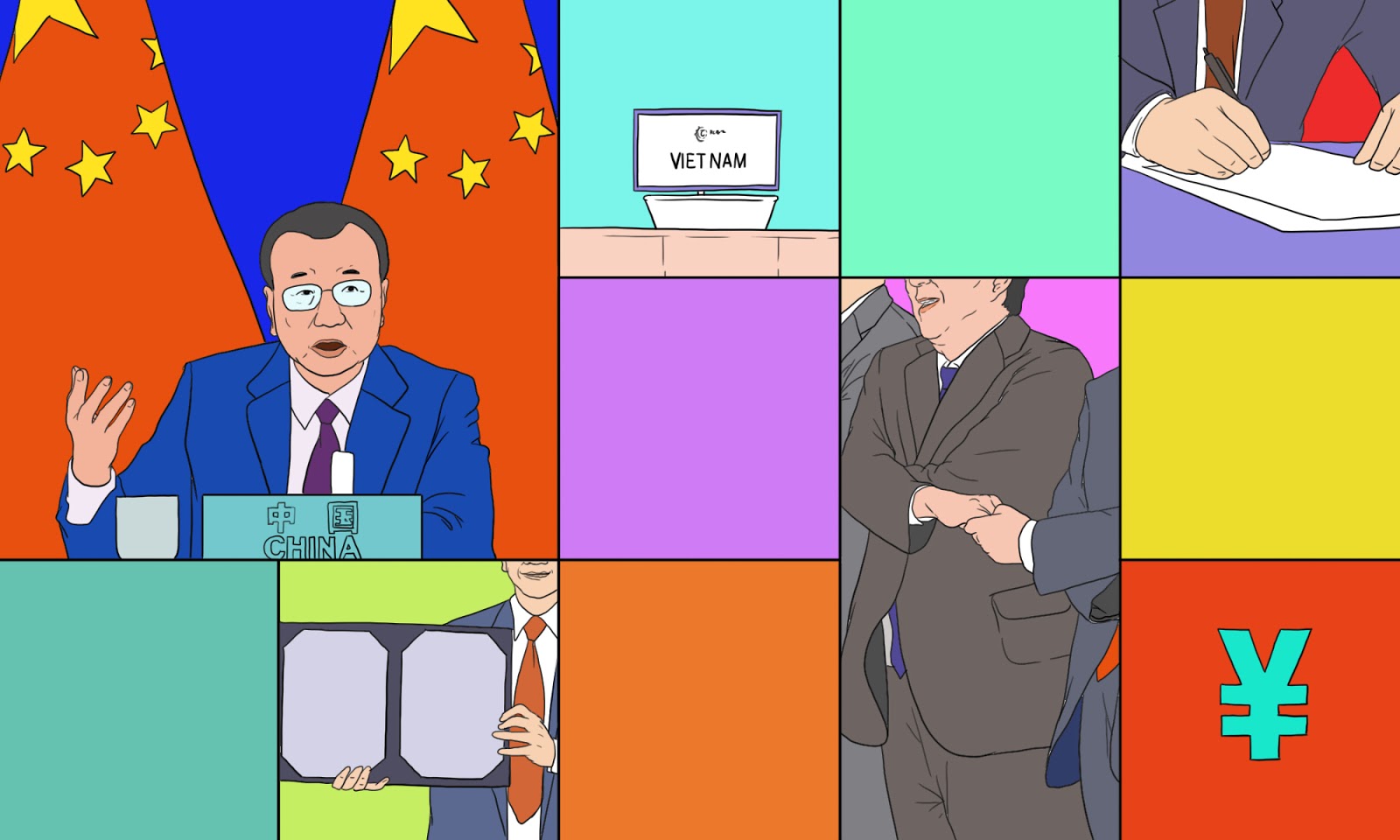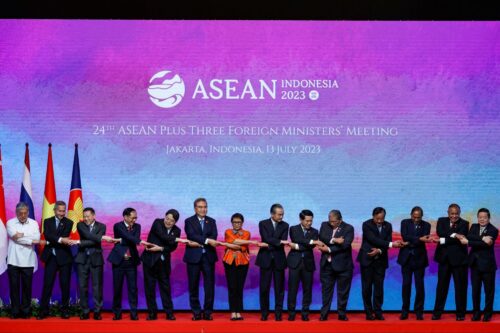China joins massive Asian trade deal, a symbolic step to set standards without the U.S.
The Regional Comprehensive Economic Partnership (RCEP) Agreement was signed yesterday, promising to set trading standards for 10 Southeast Asian countries plus China, Australia, New Zealand, South Korea, and Japan. The deal is a strategic, but mostly symbolic win for China.

The Association of Southeast Asian Nations (ASEAN) announced yesterday that a massive free-trade deal, more than eight years in the making, has been signed. The Regional Comprehensive Economic Partnership (RCEP) Agreement comprises 15 countries: the 10 members of ASEAN, plus Australia, New Zealand, South Korea, Japan, and — most importantly — China.
- RCEP covers “a market of 2.2 billion people with a combined size of $26.2 trillion or 30% of the world’s GDP.”
- It aims to eliminate tariffs and quotas for goods, and also encourages firms to invest in the member countries, per ASEAN.
What does the trade pact mean?
China may be the biggest winner, but not exactly for economic reasons — China and ASEAN already built a free-trade area more than a decade ago. Other members also won’t see significant economic effects from the deal, as most “already have equal or better deals with each other,” per Greg Polling, a senior fellow for the Southeast Asia program at the Center for Strategic and International Studies.
- The U.S. — China’s primary competitor in the global economy — is losing “strategic momentum” by not participating in this trade deal or actively shaping a regional alternative, argues Evan Feigenbaum, vice president for studies at the Carnegie Endowment for International Peace. “American firms will be active in the region even if Washington is not. But they will adapt to someone else’s rules.”
- “Asia is increasingly codifying its own regional integration in the wake of COVID-19,” adds Yves Tiberghien, a professor at the University of British Columbia.
- President-Elect Joe Biden could change this by reengaging the U.S. in negotiations for the Trans-Pacific Partnership (TPP) that Trump pulled out of three years ago, the New York Times reports. But “Biden has not said whether he would rejoin the deal — renamed the Comprehensive and Progressive Agreement for Trans-Pacific Partnership — once he enters office,” and “analysts say it is unlikely to be a high priority.”
- RCEP is “unambitious in scope but marks a win for China and a setback for India and America,” the Economist writes. India, which had pulled out of RCEP negotiations a year ago, is “party to very few bilateral trade agreements” to boost trade in other venues.
Chinese state media celebrated the propaganda win.
- A Xinhua commentary clearly written with the U.S. in mind said that RCEP “shines rays of hope through the dark clouds of global trade uncertainty,” and represents a choice of “solidarity and cooperation over conflict and confrontation.”
- The nationalistic Global Times pushed back on a common characterization of RCEP as “China-led,” saying that instead, the deal is “win-win and all-win.”
- An opinion piece in state broadcaster CGTN hailed RCEP as the result of “well contemplated diplomacy,” and said that it shows those who advocate “decoupling” with China “are likely to end up on the outside of the world’s economic gravity.”
More to read on RCEP and the future of free trade and China:
- East Asia decouples from the United States: Trade war, COVID-19, and East Asia’s new trade blocs / Peterson Institute for International Economics
- The RCEP has been signed, at last – but resistance to China could yet prove a hurdle before it takes effect / SCMP
- China-Australia relations: ‘don’t expect RCEP to solve trade dispute’ / SCMP
- Trade pact will remove tariffs on 86% of Japan’s exports to China / Nikkei Asia via Caixin
- China-Africa relations: Beijing says it will help pay for world’s largest free-trade zone / SCMP via Korea Times






